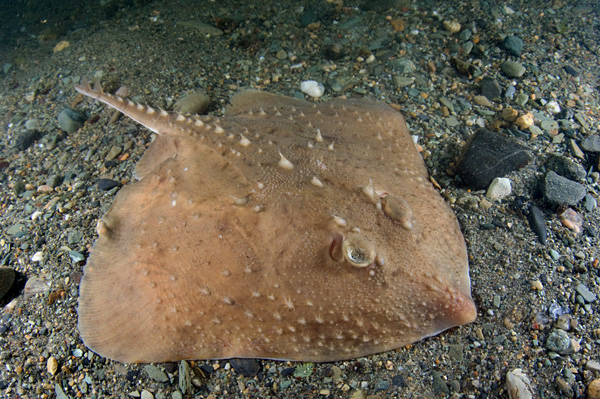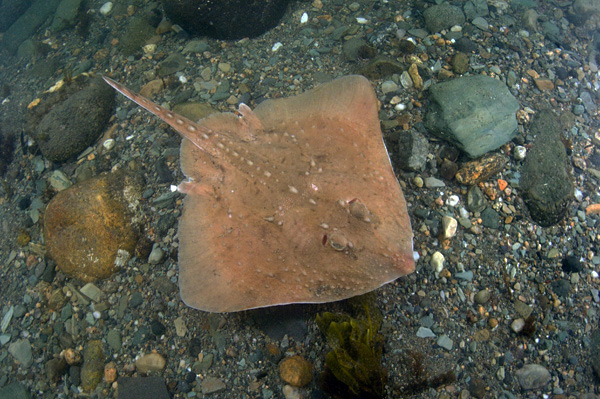|
|
|
SHARK INFO |
|
SHARK |
|
SHARK EVOLUTION |
|
|
|
SHARK DIVING |
|
SHARK DIVING 101 |
|
|
|
CONSERVATION |
|
|
|
PHOTOGRAPHY |
|
SHARK PHOTO TIPS |
|
|
|
RESOURCES |
|
|
|
WEB STUFF |
|
WHAT IS ELASMODIVER? Not just a huge collection of Shark Pictures: Elasmodiver.com contains images of sharks, skates, rays, and a few chimaera's from around the world. Elasmodiver began as a simple web based shark field guide to help divers find the best places to encounter the different species of sharks and rays that live in shallow water but it has slowly evolved into a much larger project containing information on all aspects of shark diving and shark photography. There are now more than 10,000 shark pictures and sections on shark evolution, biology, and conservation. There is a large library of reviewed shark books, a constantly updated shark taxonomy page, a monster list of shark links, and deeper in the site there are numerous articles and stories about shark encounters. Elasmodiver is now so difficult to check for updates, that new information and pictures are listed on an Elasmodiver Updates Page that can be accessed here:
|
|
_ |
THORNY SKATE |
|
Thorny Skate image © Andy Murch. All rights reserved worldwide.
Thorny Skate image © Andy Murch. All rights reserved worldwide.
View all available Thorny Skate Pictures in the shark picture database thorny skate, starry skate, starry ray, thorny back, maiden ray.
Latin Name: Amblyraja radiata Synonyms: Raja radiata, Raia americana, Raia scabrata.
Family: Rajidae
Other Names: Agdlernak Greenland Inuktitut, Escrita Spain Spanish, Klorocka Sweden Swedish, Klorokke Norway Norwegian, Kloskate Norway Norwegian, Kollivsiuternak Canada Inuktitut, Kynsirausku Finland Finnish, Pinnagigga Faeroe Is Faroese, Pinnaskøta Faeroe Is Faroese, Qarlêk Can Quebec Inuktitut, Raia-repregada Portugal Portuguese, Raie épineuse Canada French, Raie radiée France French, Raie radiée épineuse France French, Raja promienista Poland Polish, Raya radiante Spain Spanish, Sternrochen Germany German, Sterrog Netherlands Dutch, Taralikisâk Greenland Inuktitut, Tindaskata Iceland Icelandic, Tindaskøta Faeroe Is Faroese, Tærbe Denmark Danish, Vatos spinos Romania Rumanian, Zvezdchatyi skat Russia Fed Russian.
Identification: Disc rhomboid but more rounded in juveniles. Disc width and length roughly equal. Leading edges of body disc slightly convex, forming a rounded snout with a central point. Tail shorter than disc. Dorsum covered with large thorns. Thorns behind eyes and a row of 13 - 17 thorns along centre line of back to first dorsal fin are particularly prominent. Thorns towards front of disc have star shaped bases (hence starry skate/ray). Dorsum light brown to grey with irregular scattered dark blotches. Black spot at end of tail. Ventrum pale/white and smooth.
Size: Maximum length 105cm. Length at maturity 50-56cm. North American thorny skates reach a larger size than European specimens.
Habitat: The thorny skate inhabits all types of bottom compositions but it is most common on sandy, substrates. From 6 to 1400m but usually between 27-439m.
Abundance and distribution: The thorny skate is a wide ranging species in the North Atlantic Ocean and western Baltic Sea. The North American population ranges from South Carolina up to Hudson Bay and then follows the continental shelf around the southern end of Greenland across to join the Eastern Atlantic population. The eastern range extends from the English Channel up to Scantinavia and into the Baltic. There is also a localized population of thorny skates around Cape Town in South Africa. Trawls conducted by the North east Fisheries Science Center indicate that thorny skates in US waters are most abundant in the Gulf of Maine and Georges Bank regions. They are the most abundant skate species in the North Sea.
Behavior and Migration: Tagging studies on the Grand Banks indicate that the thorny skate is a highly sedentary species that remains in a small area for much of its life. Upon recapture (sometimes after a liberty of up to 20 years) thorny skates had moved less than 90 miles. Some populations have been found to undergo a short migration into deeper water during the winter months.
Diet: Crustaceans, polychaete worms and benthic fishes including sand lance, wolffish, haddock and sculpins. Smaller individuals are restricted to polychaete worms and decapods. Larger animals (60cm+) consume more bony fishes.
Reproduction: Oviparous. Thorny skate egg cases are deposited on sand and mud flats. They range in size from 3.4 to 8.9cm in length. They are rectangular in shape with hardened pointed corners. Thorny skate embryos fall prey to halibut, goosefish, Greenland sharks and predatory gastropods. An embryonic development study in the North Sea recorded average hatching times of 2.5-3 years while laboratory specimens developed in 2-2.5 years.
Vulnerability: The thorny skate is considered 'vulnerable' by the IUCN. Although this species is not the focus of a directed fishery it is caught in trawling/dredging operations targeting other benthic fishes and invertebrates. Surveys indicate that the thorny skate is increasing in some areas but it is in decline overall. Taken from the IUCN Red List: "The low relative abundance, below the fisheries limit reference point compared to early survey abundance estimates, the long-term population decline, lack of population increase with strict management laws, and the inability to monitor species specific landings result in an assessment of this species as Critically Endangered in USA waters."
Photographs: Kings Beach, Rhode Island. Specimen released from bycatch collected while trawling for squid. Images were made possible through the kind cooperation of Brian Raymond.
Similar species: There are a number of other skates inhabiting this region but the thorny skate's rough dorsum makes positive identification relatively easy.
Reaction to divers: Swims away and resettles when closely approached.
Diving logistics: The thorny skate generally inhabits depths exceeding normal diving limits.
Encounters reported by divers:
Further reading: http://www.fishbase.com http://www.nefsc.noaa.gov/sos/spsyn/op/skate/ |























